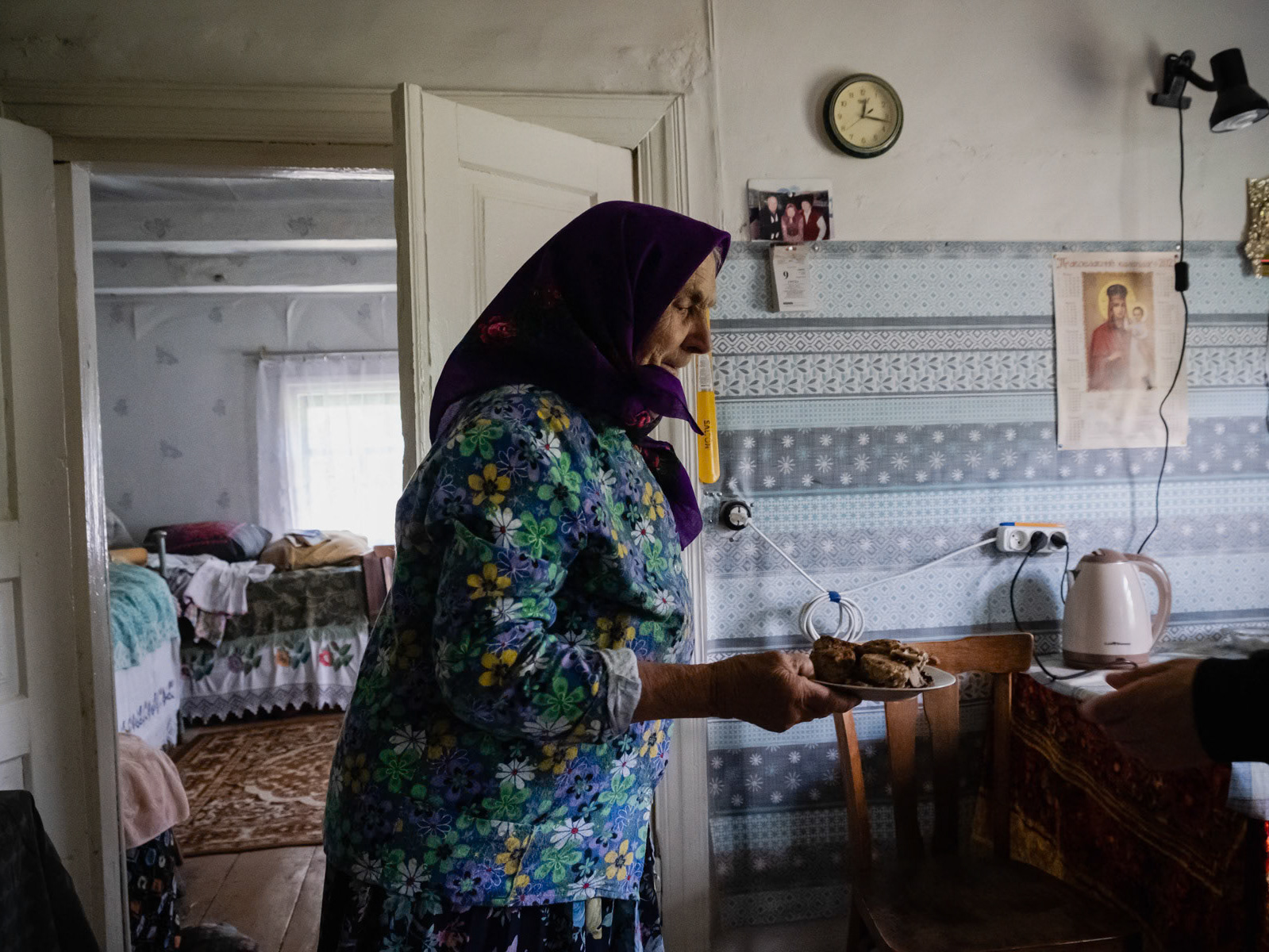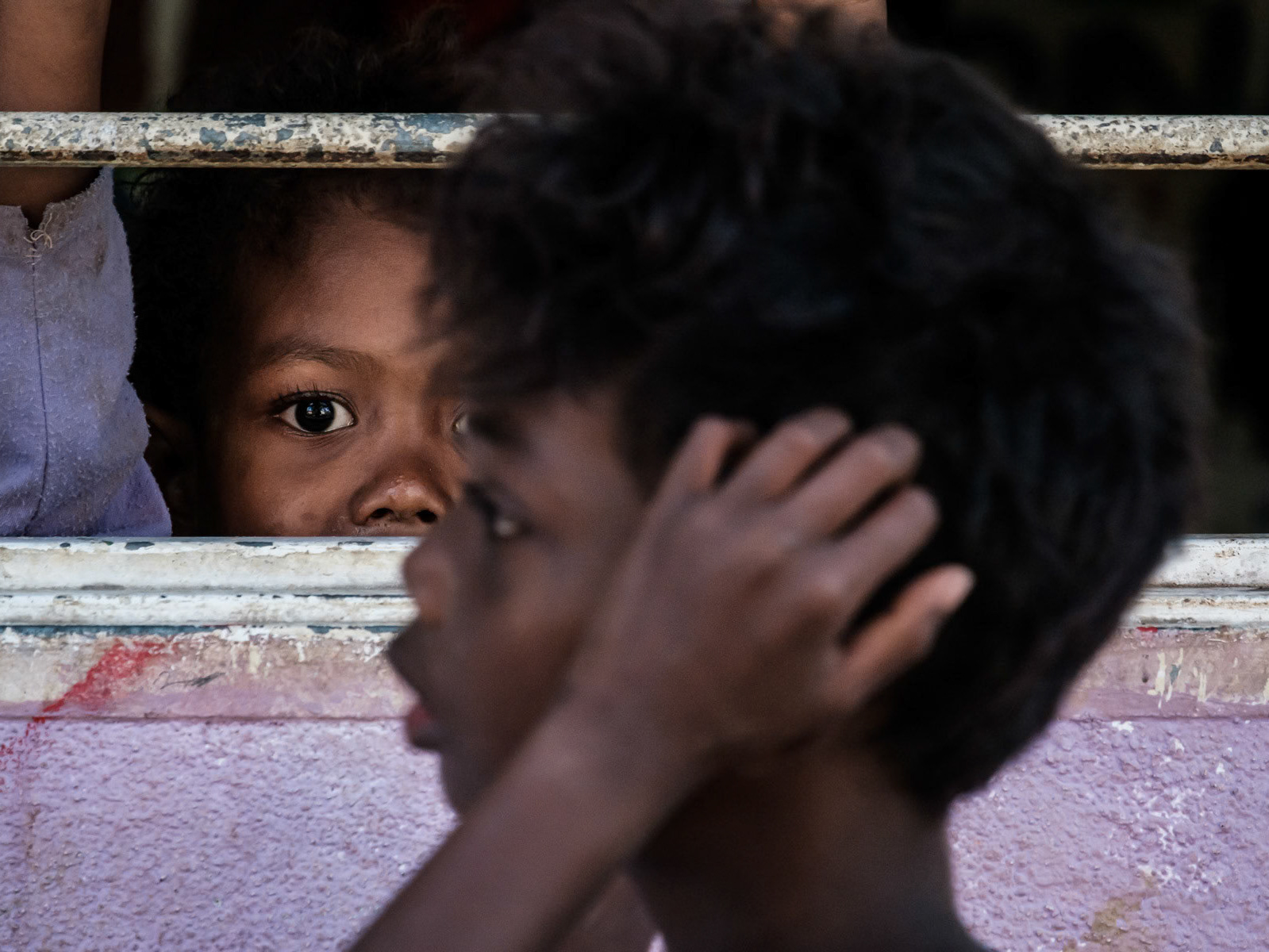The Orang Asal, meaning "Original People" in Malay, are the indigenous peoples of Malaysia, numbering approximately 2.1 million. This term encompasses the various indigenous communities of East Malaysia, particularly those in Sabah and Sarawak on Borneo Island, as well as the Orang Asli of Peninsular Malaysia. The Orang Asli, who number around 150,000, represent less than 1% of the country's population and are further divided into various ethnic subgroups and tribes.
In East Malaysia, the Orang Asal make up a significant portion of the population, with some subgroups and tribes representing over 50% of the people in Sabah and Sarawak. These communities have better access to their traditional lands and the vast rainforests compared to their counterparts in Peninsular Malaysia, where land rights are often more contested. However, they still face significant challenges, as palm oil plantations, logging, mining, and infrastructure projects continue to encroach upon their territories. For example, the Bakun Dam project in Sarawak displaced over 11,000 people from their ancestral lands.
Over the decades, many Orang Asal have been pressured to assimilate into mainstream culture, with efforts to convert them to Islam. Despite these pressures, many in Sarawak continue to practice a semi-nomadic lifestyle, hunting and gathering fruit in the rainforest. Traditional longhouses remain a central part of their lives, where some families still stay for weeks at a time, deep within the natural environment they have long called home.

The Orang Asal are the indigenous people of Malaysia and about 2.1 million. Orang Asal is the term for "Original People" in Malay and refers to the aboriginal communities of Sabah and Sarawak in East Malaysia (Northern Borneo) and Peninsular Malaysia where they are known as Orang Asli. The Orang Asli are only about 150,000 and less than 1% of the population, they are further divided in ethnic subgroups and tribes. In East Malaysia there are many more sub-groups and tribes and they make up more than 50% of the population in the States of Sabah and Sarawak. Being a large proportion of the population in Borneo their habitat rights and access to the vast rainforest is better guaranteed than in Peninsular Malaysia. Nevertheless, palm oil plantation, logging, mining and infrastructure projects have also been the cause of displacement and destruction of their natural habitat. For instance the Bakun Dam project in Sarawak has forcibly moved more than 11,000 people from their traditional lands. Also, many have in the past decennia been pressed to assimilate into main-stream culture and convert to Islam. Many Orang Asal in Sarawak are still involved in hunting and fruit gathering keeping a semi-nomadic lifestyle and staying sometimes for weeks in traditional longhouses deep in the rainforest. Indigenous people of the Penan community walking towards the town from their settlement on the edge of the rainforest to go working as daily labour in small local farms. Bario in Sarawak, Borneo, Malaysia, October 2023

A member of the Orang Ulu or indigenous people from the interior of Sarawak climbing the hills of the rainforest to go hunting and fruit picking. Sarawak in Malaysian Borneo, Malaysia, February 2020

Interior of a typical long house nesteled deep in the jungle where indigenous people will spend several days, sometimes weeks, hunting. Sarawak Rainforest in Malaysian Borneo, February 2020

Durian fruit shell, an important commodity for the Orang Ulu, the indigenous people of the rainforest in Sarawak, Borneo. Malaysia, February 2020

A Kayan indigenous person at the entrance of his long house deep in the jungle where several men from the community will stay several days while hunting and collecting tropical fruit like Durian. Rainforest in Sarawak, Malaysian Borneo, February 2020
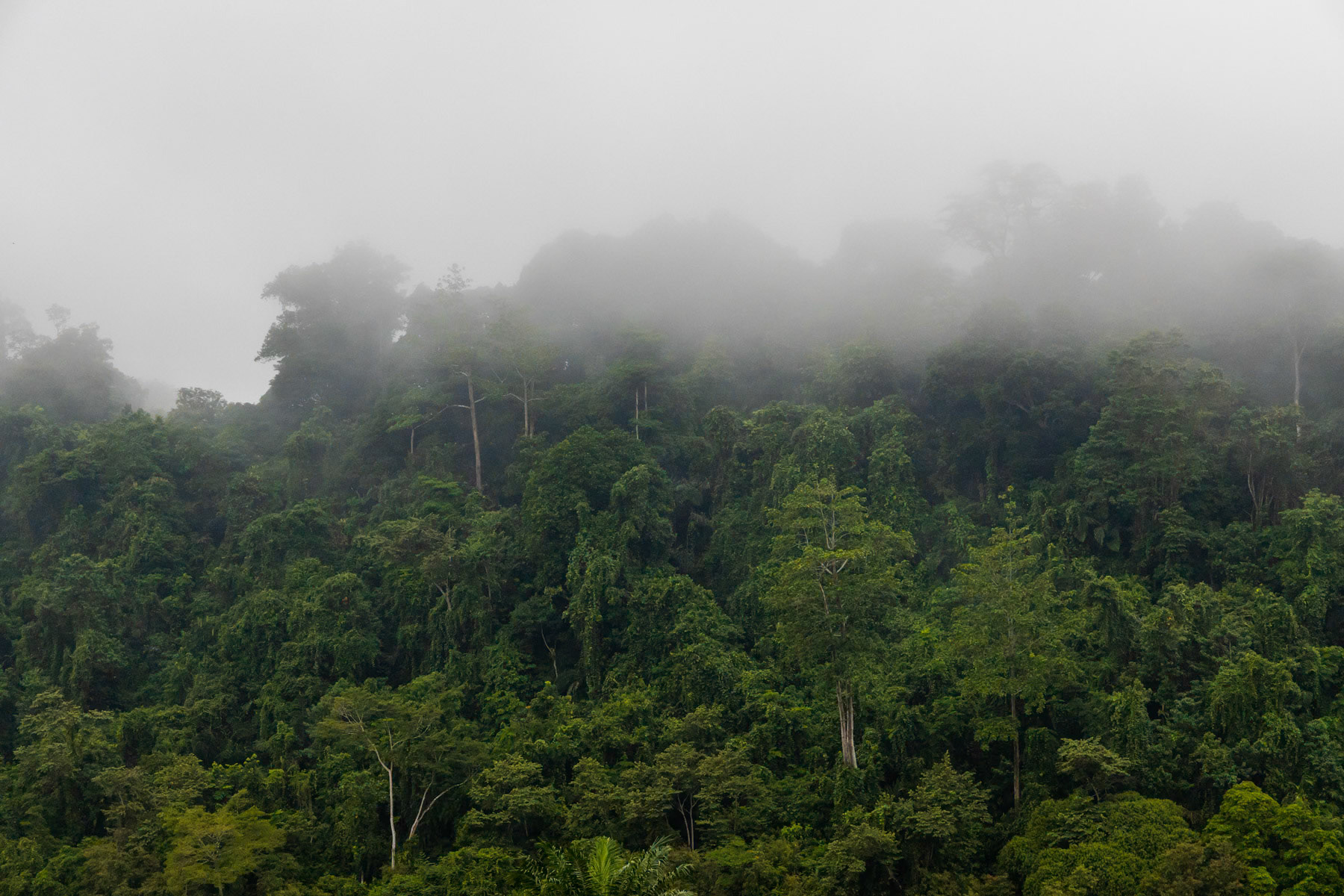
The ultimate frontier before the dense rainforest. Rajang River in Belaga, the last little town before the endless jungle. Sarawak, Malaysia, June 2022

Indingenous woman of the Bukit tribe. The Bukit tribe was originally living in the tropical rainforest. During the past decennia mine exploitation, logging and hydroelectric infrastructure have severely jeopardized their way of life and livelihood. Through re-settlement projects they are mostly living in small community clusters at the edge of the rainforest. Bukat settlement, Sarawak, Malaysian Borneo, June 2022

An indigenous person of the Kelabit tribe in Bario. Borneo, Malaysia, October 2023

A Kayan indigenous person locating fruit to fetch. Tropical rainforest in Sarawak, Malaysian Borneo, February 2020

Ever increasing palm oil plantation and paired deforestation provoke landslides and floods. River banks need to be reinforced to protect the local communities. Asap village in Sarawak, Malaysian Borneo, June 2022

Wooden longhouses in Belaga town, the last outpost before the endless rainforest of Borneo. Belaga, Sarawak, Malaysia, June 2022

Orang Utan in captivity. With ever expanding palm oil plantations in lieu of the rainforest, the natural habitat of indigenous people and wildlife is being endangered beyond a point of no return. Indigenous people are being moved to settlements on the edge of the rainforest and wildlife is being 'safeguarded' in natural sanctuaries. Sandakan, Sabah in Eastern Malaysia, February 2024
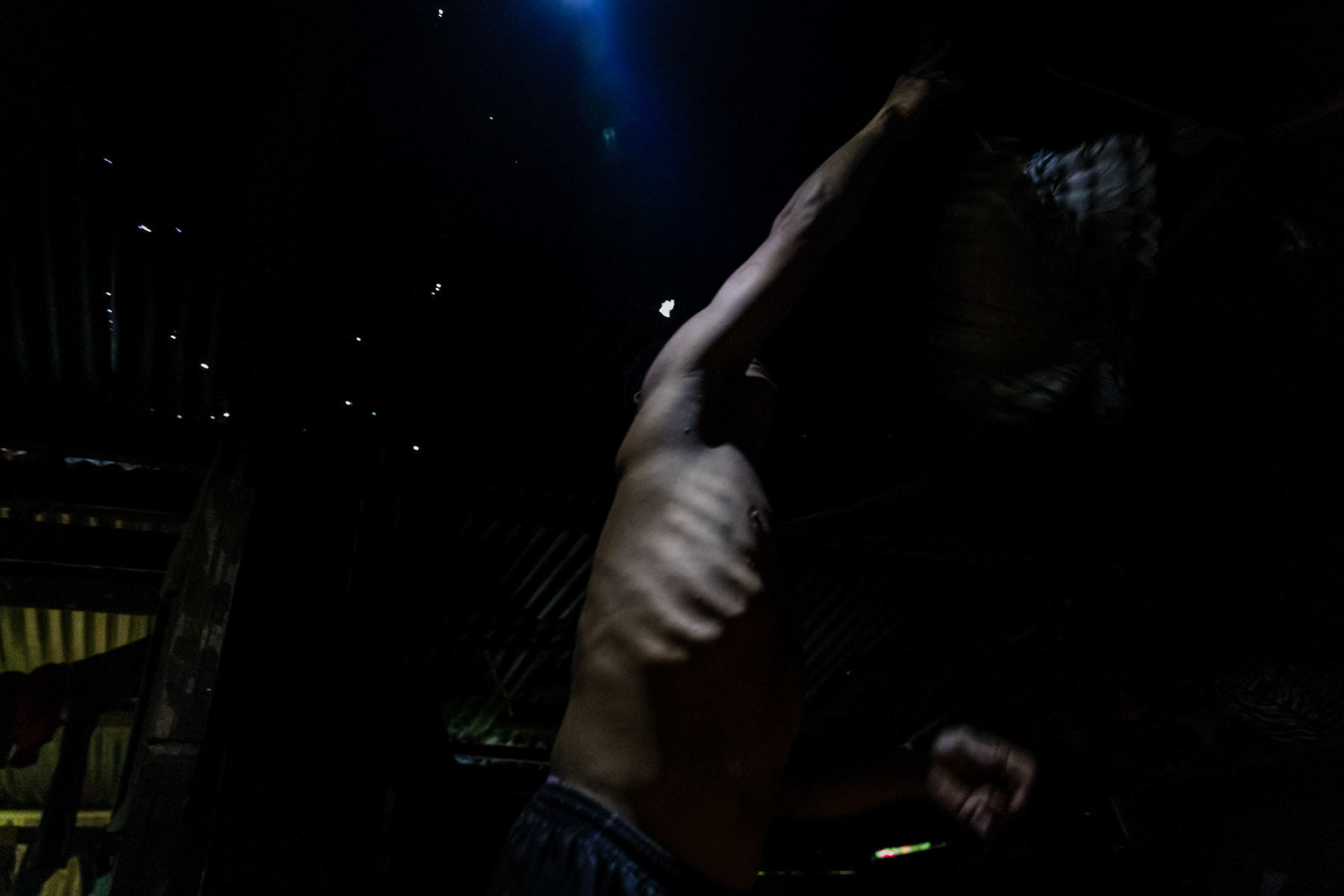
Using only a small LED battery light in the evening in a long house. Long houses, where men of the Orang Ulu spend several days or weeks, are very basic and serve merely as a protective shelter of the elements and animals deep in the jungle. Water is taken from the river and Durian shells are used as fire wood. Rainforest in Sarawak, Borneo, Malaysia, February 2020

Interior of a traditional longhouse, the common habitat of indigenous people in Borneo. Bario, Sarawak, Malaysia, October 2023
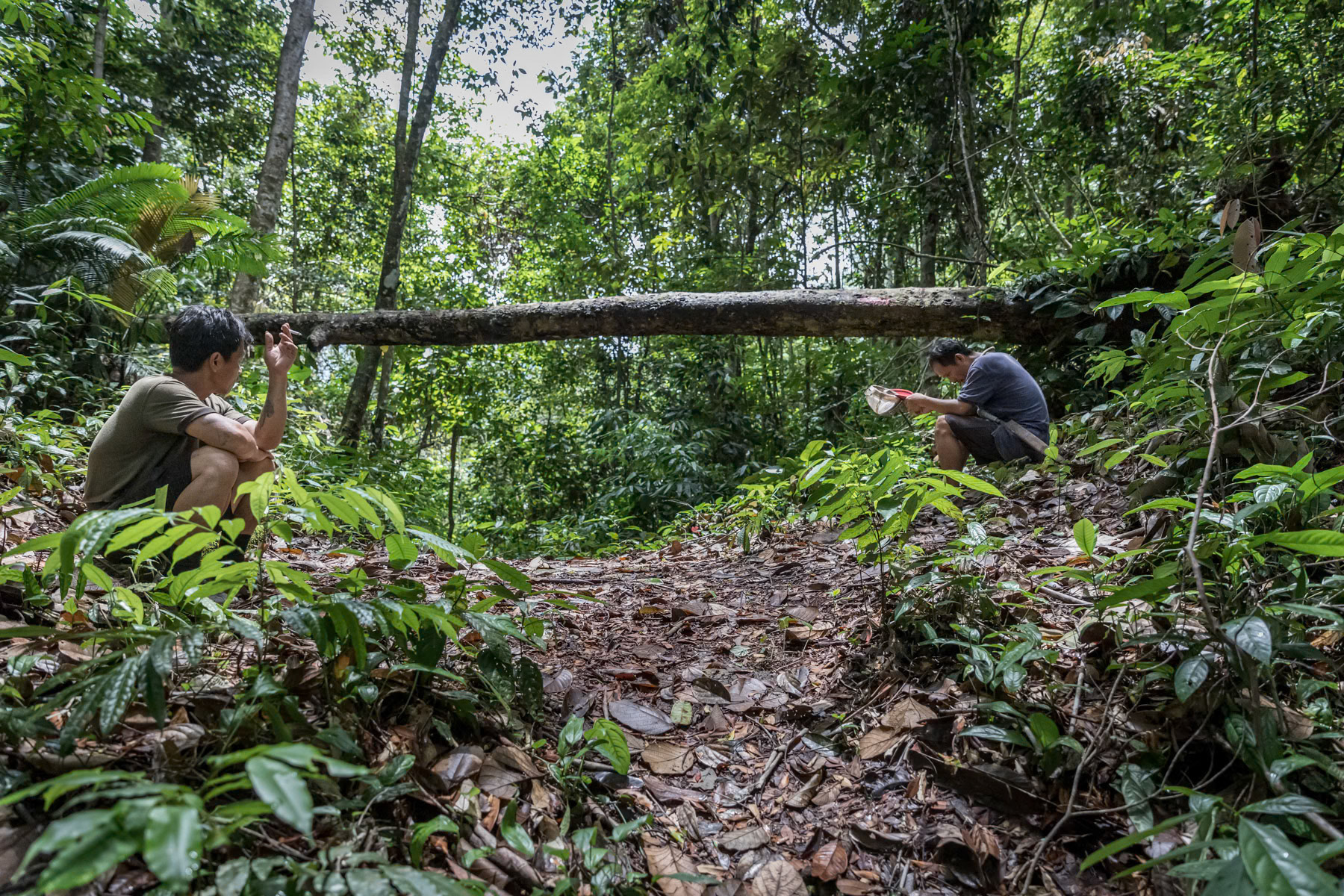
Members of the Orang Ulu or indigenous people from the interior of Sarawak taking a rest deep in the tropical rainforest, where they will spend several days hunting and fruit picking. Sarawak in Malaysian Borneo, Malaysia, February 2020

Typical long house deep in the rainforest where several men from the Orang Ulu will stay several days while hunting and collecting tropical fruit like Durian. Sarawak, Malaysian Borneo, February 2020

Long tailed macaque in his natural habitat, Tungog rainforest in Borneo, Sabah, Malaysia, February 2024
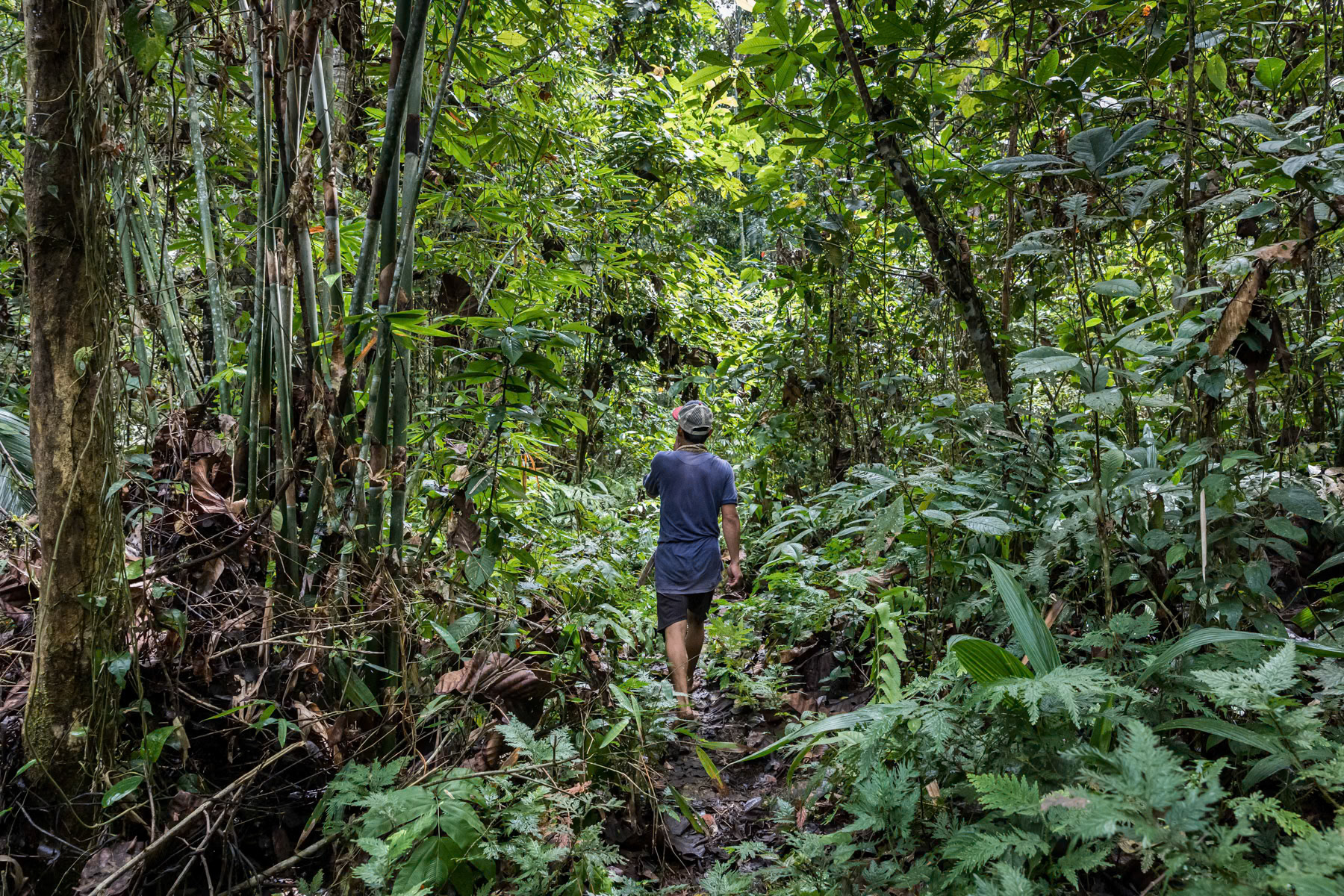
Member of the Orang Ulu or indigenous people from the interior of Sarawak walking through deep tropical rainforest to go hunting and fruit picking for several days. Sarawak in Malaysian Borneo, Malaysia, February 2020

Cemetary on the other side off the river, across the village. Local indigenous tribes with Pagan roots locate the cemetaries always across rivers so that ghosts of the dead would not be able to cross and as such stay where nobody lives. The indigenous population was converted to Christianism only during the mid 20th century, but kept numerous Pagan traditons. Rajang river communities, Belaga, Sarawak in Borneo, June 2022

Papong and his son could not go hunting in the rainforest for more than a year because a swine flu risk affecting the boar population. Hunting being his principal source of income, this combined to Covid-19 has lead to insufficient funds to buy food and feed his family. Belaga, Sarawak, Malaysia, June 2022

Saltwater crocodile in the Kinabatangan river in the Tungog rainforest of Borneo. Sabah, Malaysia, February 2024

Tungog rainforest in Kinabatangan, Borneo, Malaysia, February 2024

Women leaving their long house to go to the rainforest to pick fruit. Uma Bawang settlement, Asap in Sarawak, Malaysia, June 2022

Children returning from school walking through the endless patio of the traditional long houses. When indigenous tribes were moved fronm the rainforest into settlements they wanted to live close by each other as in the jungle so that they can collectively better protect themselves against predators. Long houses are built on pylons and have only one floor and can be up to 250m long. Sambuk village, Sarawak, Malaysian Borneo, June 2022

Indigenous highlands in Bario, Borneo, Malaysia, October 2023

A family of the Penan tribe, an indigenous community living partly on the edge of the rainforest. During long periods the whole community also moves inside the forest to hunt, fish and collect fruit. Penan settlement, Bario, Sarawak, Borneo, Malaysia, October 2023

Member of the Penan tribe, an indigenous community living partly on the edge of the rainforest. During long periods the whole community also moves inside the forest to hunt, fish and collect fruit. Penan settlement, Bario, Sarawak, Borneo, Malaysia, October 2023
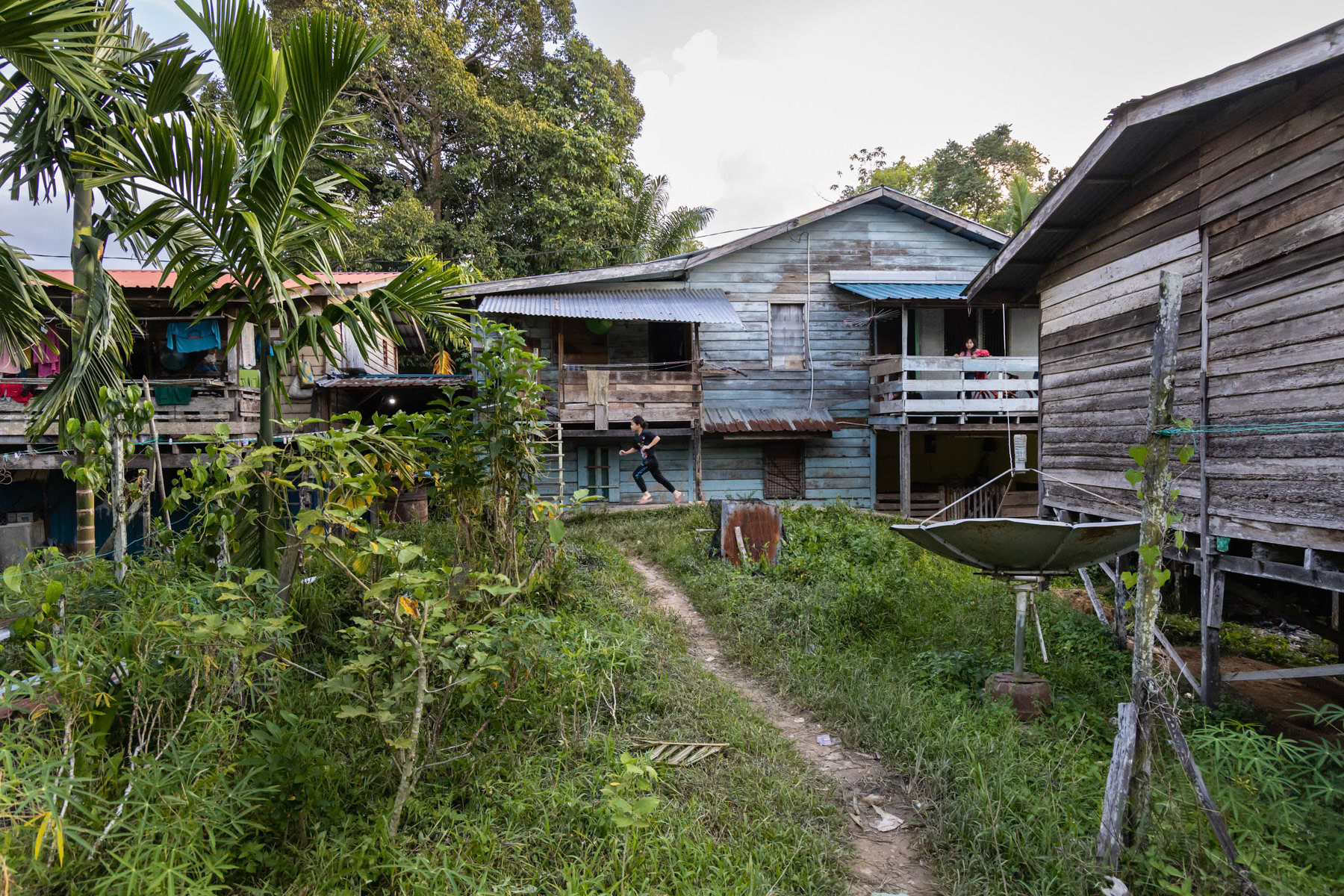
Belaga town, the last outpost before the endless rainforest of Borneo. Belaga, Sarawak, Malaysia, June 2022
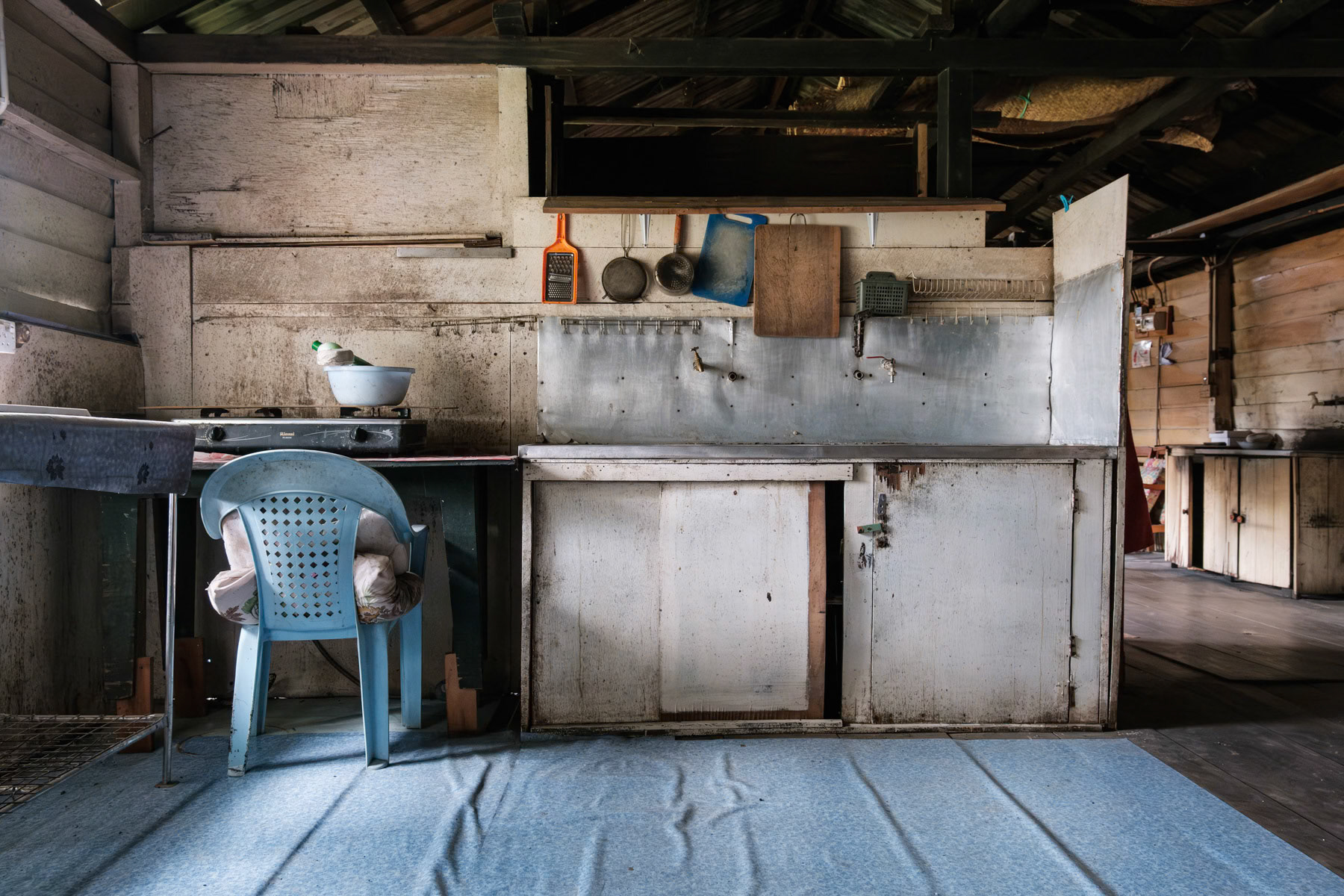
Kitchen of a traditional longhouse, the common habitat of indigenous people in Borneo. Bario, Sarawak, Malaysia, October 2023

Resident of Belaga, an outpost town at the edge of the rainforest of Borneo and inhabited by several indigenous tribes that have been re-settled there during the past decenia. Belaga town, Sarawak, Malaysia, June 2022

Resident of Belaga, an outpost town at the edge of the rainforest of Borneo and inhabited by several indigenous tribes that have been re-settled there during the past decenia. Belaga town, Sarawak, Malaysia, June 2022

The elder, 100 years, of the Bukit tribe. The Bukit tribe was originally living in the tropical rainforest. During the past decennia mine exploitation, logging and hydroelectric infrastructure have severely jeopardized their way of life and livelihood. Through re-settlement projects they are mostly living in small community clusters at the edge of the rainforest. Origianlly Pagan, the indigenous communities have been converted to Christianism throughout the 20th century, but nevertheless keeping many Pagan traditions and signs. Bukat settlement, Sarawak, Malaysian Borneo, June 2022

Indigenous people of the Penan community walking towards the town from their settlement on the edge of the rainforest to go working as daily labour in small local farms. Bario in Sarawak, Borneo, Malaysia, October 2023

Paddy fields, Bario in Borneo, Malaysia, October 2023

Indingenous man of the Bukit tribe. The Bukit tribe was originally living in the tropical rainforest. During the past decennia mine exploitation, logging and hydroelectric infrastructure have severely jeopardized their way of life and livelihood. Through re-settlement projects they are mostly living in small community clusters at the edge of the rainforest. Bukat settlement, Sarawak, Malaysian Borneo, June 2022

Interior of a traditional longhouse, the common habitat of indigenous people in Borneo. Bario, Sarawak, Malaysia, October 2023

Member of the Penan tribe, an indigenous community living partly on the edge of the rainforest. During long periods the whole community also moves inside the forest to hunt, fish and collect fruit. Penan settlement, Bario, Sarawak, Borneo, Malaysia, October 2023

Tungog rainforest in Kinabatangan, Borneo, Malaysia, February 2024

Proboscis monkeys in their natural habitat of the Borneo rainforest. Ever expanding palm oil plantations are endangering their natural habitat and may soon reach a point of no return. Kinabatangan, Sabah, Eastern Malaysia, February 2024

